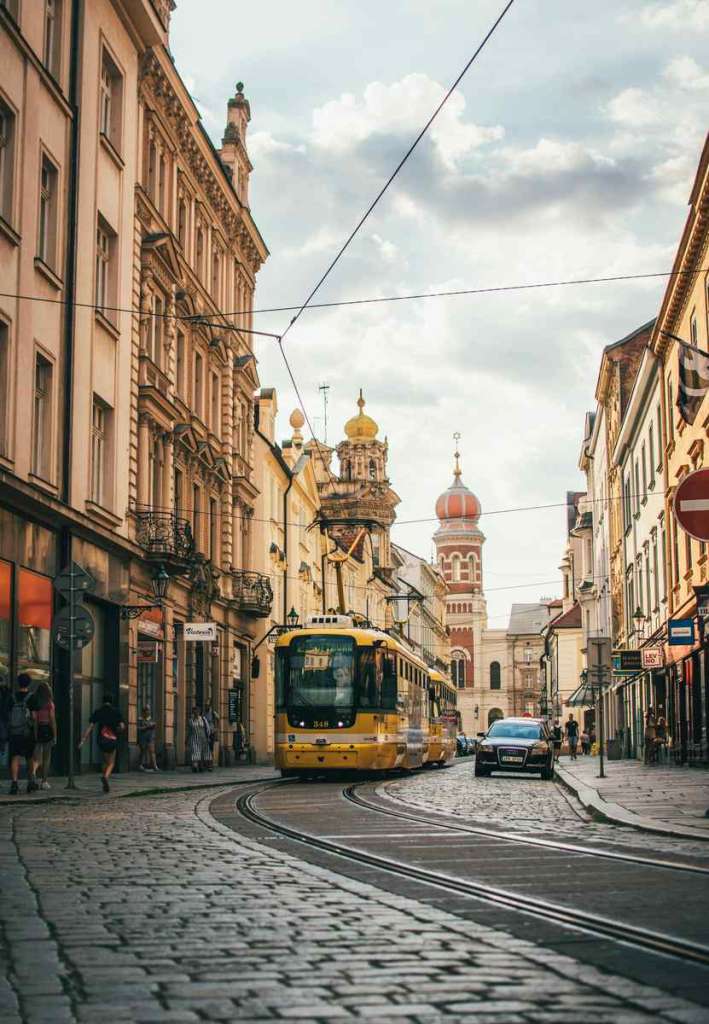How is the Transportation and Commuting in Idaho?
Idaho, a state known for its breathtaking landscapes and outdoor recreation, offers a diverse range of transportation options for both residents and visitors. Whether you prefer the convenience of public transportation, the freedom of personal vehicles, or the efficiency of cycling, Idaho caters to a variety of commuting needs.
Public Transportation in Idaho
While public transportation in Idaho may not be as extensive as in larger metropolitan areas, it provides essential services for many communities. Boise, the state’s capital and largest city, boasts a comprehensive public transportation system known as Valley Ride. Valley Ride offers a network of bus routes, including express lines, that connect various parts of the city and its suburbs. The system is reliable, affordable, and provides a convenient alternative to driving.
Other cities in Idaho, such as Idaho Falls, Pocatello, and Coeur d’Alene, also offer public transportation services. These services typically include fixed-route buses and paratransit options for individuals with disabilities. While the frequency and coverage may vary depending on the city, public transportation remains a valuable asset for those who do not have access to personal vehicles.
Personal Vehicles: A Popular Choice in Idaho
Idaho’s vast landscapes and dispersed population make personal vehicles the most prevalent mode of transportation. The state boasts an extensive network of highways and roads, ensuring seamless connectivity between cities, towns, and rural areas. Driving in Idaho offers a sense of freedom and flexibility, allowing residents to explore the state’s natural beauty and reach their destinations at their own pace.
Idaho’s infrastructure is well-maintained, and the state has been recognized for its efforts in improving road safety. The Idaho Transportation Department (ITD) plays a crucial role in planning, constructing, and maintaining the state’s transportation system. ITD collaborates with local governments and stakeholders to address transportation needs and enhance mobility for all Idahoans.
Cycling and Walking: Sustainable Options
Idaho promotes cycling and walking as sustainable and healthy modes of transportation. Many cities and towns have dedicated bike lanes and pedestrian walkways, making it easier for people to navigate their communities without relying on cars. Boise, for instance, has an extensive network of bike paths that connect neighborhoods, parks, and business districts.
Cycling and walking offer numerous benefits, including improved physical health, reduced air pollution, and cost savings. Idaho’s natural beauty and mild climate make it an ideal place to explore on two wheels or on foot. Whether it’s a leisurely ride along the Boise River Greenbelt or a hike through the Sawtooth Mountains, Idaho provides ample opportunities for active transportation.
Interstate Highways: Connecting Idaho to the Nation
Idaho is strategically located at the crossroads of several major interstate highways, connecting the state to neighboring states and beyond. Interstate 84 runs east-west through southern Idaho, providing a vital link to Utah, Nevada, and Oregon. Interstate 90 traverses the northern part of the state, connecting Idaho to Montana, Wyoming, and Washington.
These interstate highways play a crucial role in interstate commerce and tourism. They facilitate the transportation of goods and services, as well as the movement of people between Idaho and other parts of the country. The interstate highways also serve as important evacuation routes during emergencies, ensuring the safety and well-being of Idaho residents.
Airports and Rail Lines: Connecting Idaho to the World
While personal vehicles remain the dominant mode of transportation in Idaho, the state is also well-connected by air and rail. Boise Airport (BOI) is the primary commercial airport in Idaho, offering direct flights to major cities across the United States. Regional airports in Idaho Falls, Pocatello, and Twin Falls provide additional air travel options within the state.
Amtrak, the national passenger rail service, operates two daily trains through Idaho: the Empire Builder and the California Zephyr. These trains connect Idaho to Chicago, Seattle, Portland, and San Francisco, providing a convenient and scenic way to travel across the country. The rail lines also serve as freight corridors, transporting agricultural products, minerals, and other goods throughout the state and beyond.
Conclusion
Idaho’s transportation system caters to a diverse range of needs and preferences, from the convenience of public transportation to the freedom of personal vehicles and the sustainability of cycling and walking. The state’s well-maintained infrastructure, strategic location, and commitment to alternative transportation options ensure that Idahoans and visitors alike have access to efficient and reliable ways to get around. Whether you’re exploring the state’s natural wonders, commuting to work, or traveling for business or pleasure, Idaho’s transportation system has you covered.
Idaho’s Commitment to Transportation
Idaho recognizes the importance of a modern and efficient transportation system for its economic prosperity and quality of life. The state government has made significant investments in infrastructure improvements, including road expansions, bridge replacements, and public transportation enhancements.
The Idaho Transportation Board (ITB) is the governing body responsible for overseeing the state’s transportation system. The ITB consists of seven members appointed by the governor and confirmed by the Idaho Senate. The board sets policy and priorities for transportation planning, construction, and maintenance.
Idaho’s transportation system is funded through a combination of state and federal sources. The state’s gas tax, vehicle registration fees, and other revenue sources provide the majority of funding for transportation projects. Idaho also receives federal funding through the Federal Highway Administration (FHWA) and the Federal Transit Administration (FTA).
Challenges and Opportunities
Idaho’s transportation system faces a number of challenges, including:
Population growth: Idaho is one of the fastest-growing states in the country, and this growth is putting a strain on the state’s transportation infrastructure.
Congestion: Traffic congestion is a growing problem in Idaho’s major cities, particularly during peak travel times.
Funding: The state’s transportation system is heavily reliant on gas tax revenue, which is declining as more people drive fuel-efficient vehicles.
Climate change: Idaho’s transportation system is vulnerable to the effects of climate change, such as flooding, wildfires, and extreme heat.
Despite these challenges, Idaho is committed to improving its transportation system. The state is exploring a number of innovative solutions, such as:
Public-private partnerships: The state is partnering with private companies to finance and construct transportation projects.
Transportation demand management: The state is implementing strategies to reduce the demand for car travel, such as promoting public transportation, cycling, and walking.
Climate-resilient infrastructure: The state is investing in transportation infrastructure that is resilient to the effects of climate change.
Idaho’s Transportation Future
Idaho’s transportation system is evolving to meet the needs of a growing and changing state. The state is committed to providing a safe, efficient, and environmentally friendly transportation system for all Idahoans.
Here are some of the key trends that will shape Idaho’s transportation future:
Increased use of public transportation: Public transportation will become increasingly important as Idaho’s population grows and traffic congestion worsens.
More electric vehicles: The number of electric vehicles on the road will increase as the technology becomes more affordable and accessible.
Autonomous vehicles: Autonomous vehicles have the potential to revolutionize transportation in Idaho.
Connected infrastructure: Idaho is investing in connected infrastructure, such as smart traffic signals and vehicle-to-vehicle communication, to improve safety and efficiency.
Idaho is well-positioned to meet the challenges and opportunities of the future. The state has a strong economy, a growing population, and a commitment to innovation. Idaho’s transportation system will continue to evolve to meet the needs of its citizens for decades to come.

